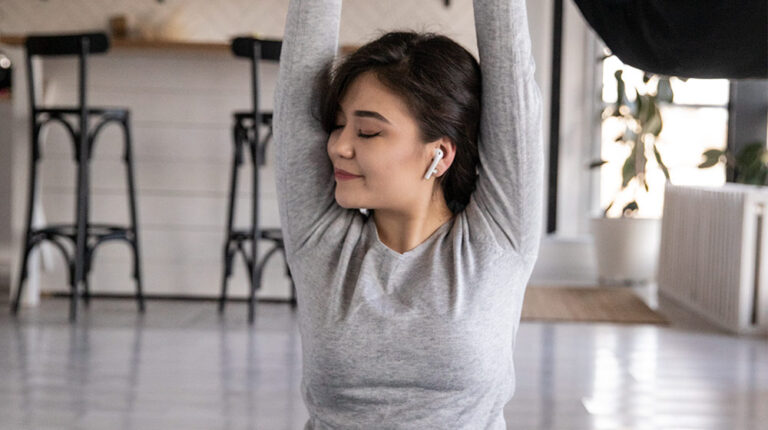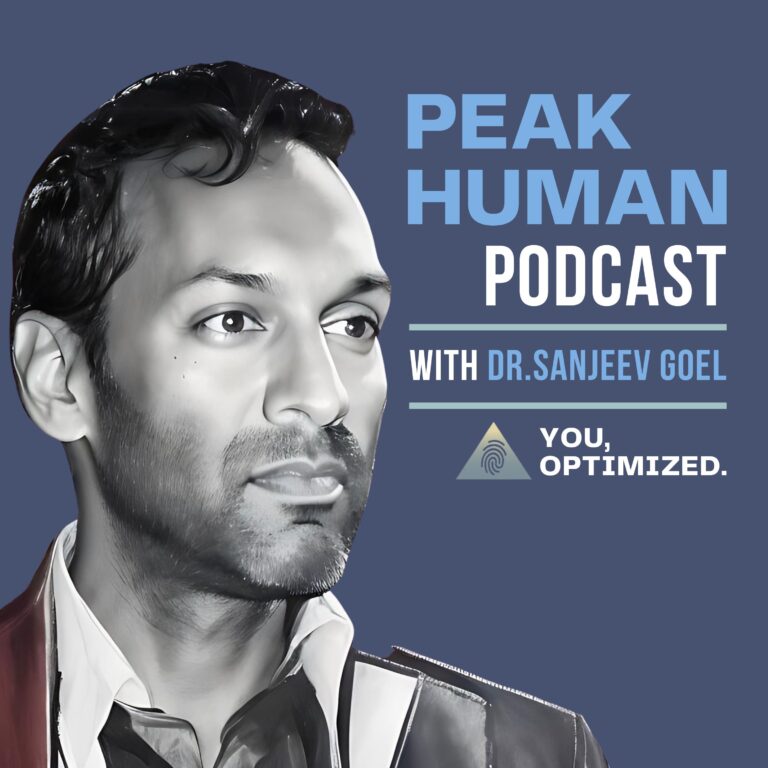Overview
Taking an ice bath for a quick recovery is a widespread procedure performed by many professional athletes. As a practice done for decades, applying cold on the whole body or the affected area has become a “first-aid” solution to physical recovery.
Recently, a new use of cold temperature in a therapy called “cryotherapy” has emerged as a superior alternative due to its unique benefits. This article provides the latest information on how cryotherapy works and its applications.
RELATED: Why Biohacking Is Not Just Another Wellness Trend?
Utilize the Cold – Learn How Cryotherapy Affects Your Body
What Is Cryotherapy?

Cryotherapy involves the safe exposure of the human body to cold air (usually nitrogen gas) in a short and scheduled time of 2 to 4 minutes.
The gas temperature used in cryotherapy can be as low as -289°F (-178°C) to activate several physiological responses in the body quickly. The premise of cryotherapy is to quick-freeze and extract heat from the body to attain some health effects.
There are two subtypes of cryotherapy: whole-body cryotherapy, where the entire body is sat in a specialized cold chamber, and localized cryotherapy, where only a particular body area is exposed to cold.
Each type of cryotherapy works differently and produces distinct benefits. However, the shared objective of the two types is to take the target body area to the exact near-freezing, healing temperature.
How Does Cryotherapy Work?
Whole-body Cryotherapy
In whole-body cryotherapy, the entire body is exposed to cold except the head. Therefore, you will be required to keep your body dry from sweat or moisture before the procedure to avoid frostbite.
The frigid temperature instantly causes the blood vessels to constrict, redirecting blood away from the peripheral organs to the core body. The redirected blood is then recharged with oxygen and anti-inflammatory proteins.
After the procedure, blood vessels warm up and dilate, allowing oxygen- and anti-inflammatory-rich blood to flush back to the peripheral organs. The body burns stored energy to produce heat and warm itself as a natural response.
This is where you may feel a slight tremor as your body shivers to maintain its core temperature. However, cold-related injury is minimal as the therapy lasts briefly. To avoid inhaling cold gas, you wear protective garments, such as a mask.
Since each person has a different body composition, the procedure’s efficiency may vary from individual.
Localized Cryotherapy
Local cryotherapy delivers cold temperatures to the target body area using a hose to compress liquid nitrogen into a high-pressure vapor beam. This causes blood vessels to constrict, providing immediate relief from inflammation and pain.
Localized cryotherapy is more specific than whole-body cryotherapy. It selectively alleviates discomfort in a particular area. Compared to whole-body cryotherapy, the localized procedure is superior in targeting the damaged body area without affecting other body parts.
Cryotherapy Benefits
Reduce Weight
Whole-body cryotherapy can aid in weight loss by increasing energy expenditure through elevated thermogenesis (heat production).
When the body is exposed to cold temperatures, it naturally responds by converting stored energy into heat to compensate for the heat loss. This increase in thermogenesis positively correlates with weight loss, meaning that the more the body uses its stored energy to warm itself, the more fat it burns for weight loss.
Further, whole-body cryotherapy also indirectly promotes weight loss by increasing the amount and activity of brown fat.
Brown adipose tissue, or brown fat, is the thermogenic, metabolically active fat in small amounts in the human body. This type of fat is converted from white fat by cold exposure. As a result, it elevates thermogenesis, causing the body to burn extra energy for weight loss.
Reduce Inflammation
Localized cryotherapy reduces inflammation by redirecting the blood away from the inflamed part of the body.
Although localized cryotherapy is often equated with an ice pack, this procedure is different. One advantage of localized cryotherapy is that you can immediately retain normal mobility and flex your muscles instead of feeling stiffness and numbness after using an ice pack.
In addition, cryotherapy implemented before exercise can also prevent inflammation and soreness from occurring.
Recover Muscles
Both whole-body and localized cryotherapy is widely used in sports medicine.
These procedures can reduce inflammation and recover muscles. However, how effective cryotherapy is in muscle rehabilitation depends on when you implement this procedure.
It is best to perform cryotherapy immediately between exercise bouts when rapid recovery is required. You can also apply cryotherapy several hours after an injury to facilitate post-exercise muscle recovery.
Improve Skin Texture
Localized cryotherapy can also improve skin texture and elasticity because it promotes collagen expression, meaning collagen is better synthesized and regulated. In addition, by causing the skin’s surface to contract, cold temperature tightens and minimizes the size of facial pores, retaining a smooth texture of the skin.
Moreover, blood and oxygen flow back once the blood vessels return to average temperature, maintaining a youthful look for your skin. As a result, cryotherapy can help slow and even reverse the appearance of aging.
RELATED: 8 Muscle Recovery Supplements You Should Take After Working Out
Is Cryotherapy Safe?
Cryotherapy is generally safe for most adults if implemented correctly.
Protection and Supervision Are Compulsory
The procedure should only be performed with protective garments under the provider’s supervision.
Any noncompliance with safety regulations or negligence on the provider’s part during treatment may result in unwanted side effects. Also, cryotherapy utilizes ultra-cold temperatures, so precautions must be taken before the therapy.
Potential Side Effects of Cryotherapy
If the utilized temperature is below the recommended degree or the process is extended after the recommended 4 minutes, some potential side effects of cryotherapy may occur. These side effects include:
- Hypothermia (body temperature below 95°F or 35°C)
- Rapid breathing
- Pale skin
- Confusion
- Drowsiness
- Frostbite
Recent Findings in Cryotherapy
Cryotherapy Needs to Be Supported by More Clinical Evidence
If you have decided to try cryotherapy, please remember that the FDA has not approved this treatment for any medical conditions. Most of the claims about the benefits of cryotherapy are based on anecdotal evidence, and there is very little medical literature available on this therapy.
For this reason, any ‘promotional’ attempt claiming that cryotherapy can aid in treating diseases and conditions other than the four benefits above should be considered unconfirmed uses of the therapy. The FDA is also concerned that patients who choose cryotherapy may not see any improvement or even worsen their medical conditions.
On top of that, the FDA says cryotherapy may pose risks to patients, like frostbite or burns, due to the use of ultra-cold temperatures. Therefore, you should talk to your doctor first to discuss the pros and cons of cryotherapy before using it.
Cryotherapy as an Experimental Treatment for Some Cancers
According to Cancer Research UK, cryotherapy can be an alternative treatment option for some cancers. The rationale for using cryotherapy is that extreme cold can destroy cancer cells in the body.
Specifically, when applied directly to the skin using compressed liquid nitrogen, localized cryotherapy may help treat skin cancer. After the treatment session, you may notice a rough surface that forms over the treated area called a scab. This scab will fall off with any dead cancer cells after several months, resolving the area of cancer.
The report by Cancer Research UK also claims that other variations, such as cryosurgery or cryoablation, in which ultra-cold temperatures are more invasive, may help treat other cancers like lung, kidney, and prostate cancer.
However, these therapy applications are still in the clinical trial stage, so more research is required.
Likewise, another study on cryotherapy and breast cancer shows that this therapy may be used to treat breast cancer.
When using cryotherapy to treat cancers in the body, a small needle known as a cryoprobe delivers liquid nitrogen directly to the cancer tissue. Despite being an experimental treatment, scientists believe cryotherapy might be an excellent alternative to breast cancer surgery.
Bottom Line: Should You Try Cryotherapy?
Cryotherapy can be a new remedy for weight loss and physical and skin recovery. Moreover, to accelerate your rehabilitation process and enhance your athletic performance, you can implement this therapy with other supporting alternatives, such as cold-water immersion.
However, it would be best if you took cryotherapy with caution, given that the therapy has not acquired approval from the FDA for any of its claimed applications. Nevertheless, the four uses of cryotherapy mentioned above in this article are the most thoroughly researched and should be considered the primary benefits.
References
Swenson, C., Swärd, L., Karlsson, J. (1996). Cryotherapy in Sports Medicine. National Center for Biotechnology Information.
Whole Body Cryotherapy (WBC): A “Cool” Trend that Lacks Evidence, Poses Risks. U.S. Food and Drug Administration (2016).
Cryotherapy. Cleveland Clinic (2020).
Cryotherapy Treatment for Cancer. Cancer Research UK (2022).
Cryotherapy. Breastcancer.org (2022).
Haq, A., Ribbans, W., Hohenauer, E., Baross, A. (2022). The Effect of Repetitive Whole Body Cryotherapy Treatment on Adaptations to a Strength and Endurance Training Programme in Physically Active Males. Frontiers.
Allan, R., Malone, J., Alexander, J., Vorajee, S., Ihsan, M. et al. (2022). Cold for Centuries: A Brief History of Cryotherapy to Improve Health, Injury and Post-exercise Recovery. Springer.
If you have questions about cryotherapy or any health problems discussed here, connect with us and learn more.
At Peak Human, our team of healthcare professionals is dedicated to helping you reach your ‘peak’ health with a custom whole-person approach. Using the most cutting-edge, science-backed biohacking and aesthetic tools, technologies, and treatments available today, we help you achieve the highest physical/cognitive performance state, leading to an improved overall quality of life.
For questions or to book an appointment, don’t hesitate to contact us. Get personalized support and insight from expert physicians.
UP NEXT:
- 5 Benefits of High-intensity Interval Training
- Rheumatoid Arthritis: Causes, Symptoms & Treatment
- Is It Possible to Prevent Bone Loss? Causes, Symptoms & Treatment









